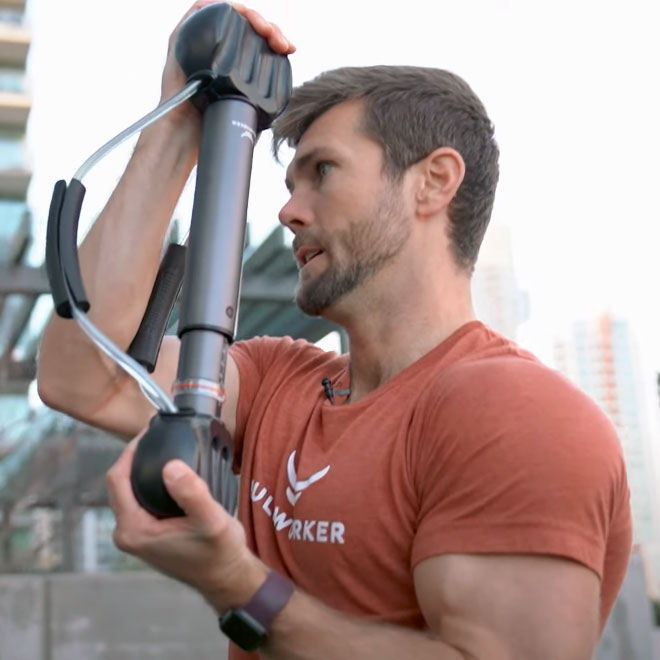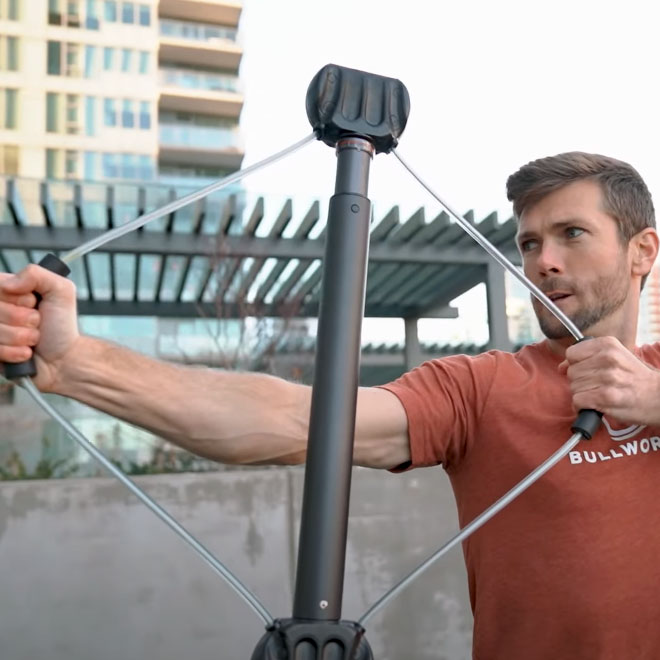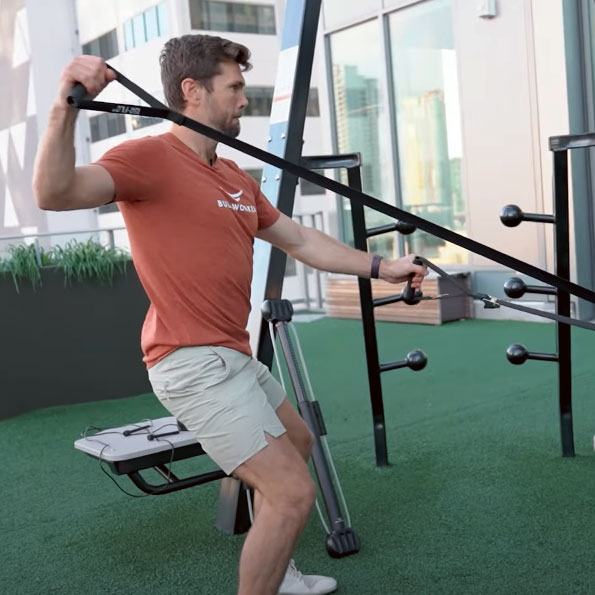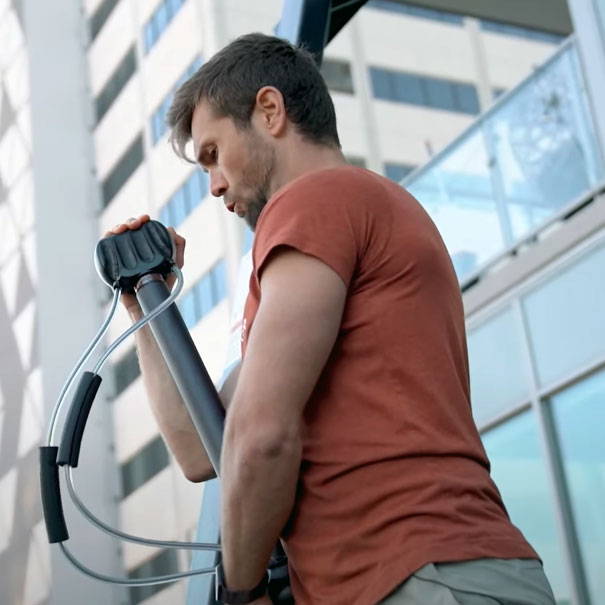Introduction to Fast Fitness: The Art of Circuit Training
In today’s fast-paced world, finding time for fitness can be a challenge. We often find ourselves juggling multiple responsibilities, leaving little room for prolonged workout sessions. However, there is a solution that can help you achieve maximum results in minimum time – circuit training.
This revolutionary approach to fitness has taken the exercise world by storm, offering a fast and effective way to enhance strength, endurance, and overall fitness.
In this article, we will explore the wonders of circuit training, highlighting its benefits and why it should be an integral part of your workout routine. Prepare to embark on a journey of fast fitness like never before! The following routine will incorporate the biohacking strength training technique of isometrics proven to engage more muscle fibers and build strength up to 66% faster than traditional weight lifting.

What is Circuit Training?
Circuit training is a dynamic and versatile exercise regimen that combines cardiovascular exercises with resistance training in a rapid succession of movements. It involves performing a series of exercises, known as stations, with minimal rest in between. These stations often target different muscle groups, ensuring a comprehensive full-body workout.
The beauty of circuit training lies in its ability to incorporate both aerobic and anaerobic exercises. By engaging in short bursts of intense activity, followed by brief periods of rest, circuit training optimizes calorie burn, increases cardiovascular fitness, and builds strength all at once. It’s an incredibly efficient way to maximize your workout time and achieve impressive results.

The Need for Fast Fitness:
In a world where time is of the essence, fast fitness has become a necessity rather than a luxury. People are seeking ways to achieve their fitness goals without compromising their other commitments. Circuit training provides a solution by delivering a potent combination of strength training, cardiovascular exercise, and fat burning in a fraction of the time required for traditional workouts. Here’s why everyone should embrace the power of fast fitness.

1. Time Efficiency
One of the biggest advantages of circuit training is its time-saving nature. Traditional workouts often require dedicating separate sessions for strength training and cardio exercises. With circuit training, you can seamlessly blend these components, optimizing your workout time. By transitioning swiftly from one exercise to another, you engage multiple muscle groups and elevate your heart rate, ensuring a comprehensive workout within a shorter duration.
2. Increased Calorie Burn:
Fast fitness through circuit training revs up your metabolism, leading to increased calorie burn during and after your workout. By engaging in high-intensity exercises and maintaining a steady flow, you tap into both aerobic and anaerobic energy systems. This combination not only torches calories during the workout but also triggers the afterburn effect, where your body continues to burn calories long after you’ve completed the session. This metabolic boost aids in weight loss and body recomposition goals.
3. Muscle Conditioning:
Circuit training is not just about burning calories; it also offers remarkable benefits for specific muscle groups. Let’s focus on the back, shoulders, and biceps to understand how this circuit training routine can help you develop strength and definition in these areas:
- Back: This Fast Fitness Circuit training routine incorporates exercises like bodyweight and self-resisted rows with your ISO-FLO to lat pulldowns and cable spreads with your Bullworker to target the muscles in your back. These movements help strengthen your upper and lower back, improving your strength, definition, posture and reducing your risk of injury. A strong back also enhances overall upper body strength and promotes balanced muscle development.
- Shoulders: This circuit training includes shoulder exercises such as self-resisted reverse flys with your ISO-FLO and cable spreads with your Bullworker. These movements engage the posterior deltoid muscles, promoting stability and strength in your shoulders. Well-developed shoulders not only improve your appearance but also contribute to better posture and a reduced risk of injury during life and other exercises.
- Biceps: Exercises like body weight and self-resisted bicep curls with your ISO-FLO and bicep curls with your Bullworker are frequently incorporated into this circuit training routines These movements target the biceps, promoting muscle growth and strength in the front of your upper arms. Well-defined biceps not only enhance your physique but also assist in various functional movements involving lifting and pulling.
By incorporating circuit training into your workout routine, you can enjoy these benefits while simultaneously reaping the advantages of overall body conditioning and fat loss.

Conclusion of Fast Fitness: The Art of Circuit Training
Fast fitness through circuit training is a game-changer for individuals seeking to optimize their workouts without sacrificing time or results. This dynamic approach blends strength training and cardiovascular exercise into one power-packed routine, allowing you to achieve remarkable fitness gains efficiently. By harnessing the power of circuit training, you can enjoy the time-saving benefits, increased calorie burn, and targeted muscle conditioning it offers. Embrace the art of circuit training, and unlock a world of fast fitness possibilities that will transform your body and elevate your overall well-being!
Remember, fitness is a personal journey, and circuit training is just one of the many tools at your disposal. Explore different workout styles, find what works best for you, and always strive to challenge your limits. Fast fitness is not just about time; it’s about the passion, dedication, and motivation you bring to your workouts. So, lace up those shoes, grab your water bottle, and embark on a circuit training adventure that will redefine your fitness journey!
Note: We do not give medical advice. Remember to consult with your physician or healthcare provider before starting any new exercise routine, particularly if you have any pre-existing medical conditions or concerns.





